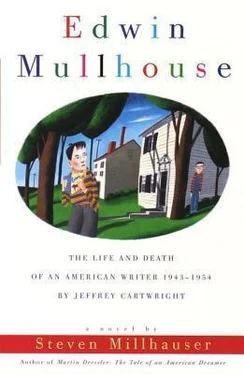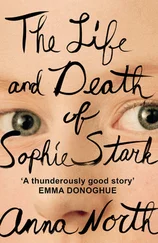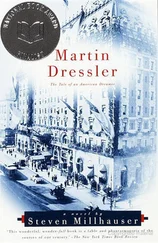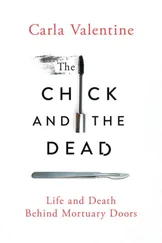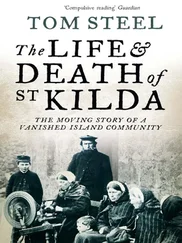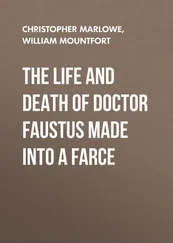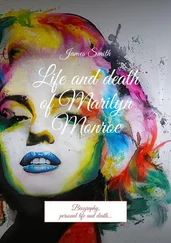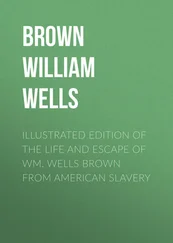Steven Millhauser - Edwin Mullhouse - The Life and Death of an American Writer 1943-1954
Здесь есть возможность читать онлайн «Steven Millhauser - Edwin Mullhouse - The Life and Death of an American Writer 1943-1954» весь текст электронной книги совершенно бесплатно (целиком полную версию без сокращений). В некоторых случаях можно слушать аудио, скачать через торрент в формате fb2 и присутствует краткое содержание. Год выпуска: 2011, ISBN: 2011, Издательство: Knopf Doubleday Publishing Group, Жанр: Современная проза, на английском языке. Описание произведения, (предисловие) а так же отзывы посетителей доступны на портале библиотеки ЛибКат.
- Название:Edwin Mullhouse: The Life and Death of an American Writer 1943-1954
- Автор:
- Издательство:Knopf Doubleday Publishing Group
- Жанр:
- Год:2011
- ISBN:9780307787385
- Рейтинг книги:3 / 5. Голосов: 1
-
Избранное:Добавить в избранное
- Отзывы:
-
Ваша оценка:
- 60
- 1
- 2
- 3
- 4
- 5
Edwin Mullhouse: The Life and Death of an American Writer 1943-1954: краткое содержание, описание и аннотация
Предлагаем к чтению аннотацию, описание, краткое содержание или предисловие (зависит от того, что написал сам автор книги «Edwin Mullhouse: The Life and Death of an American Writer 1943-1954»). Если вы не нашли необходимую информацию о книге — напишите в комментариях, мы постараемся отыскать её.
.
Edwin Mullhouse: The Life and Death of an American Writer 1943-1954 — читать онлайн бесплатно полную книгу (весь текст) целиком
Ниже представлен текст книги, разбитый по страницам. Система сохранения места последней прочитанной страницы, позволяет с удобством читать онлайн бесплатно книгу «Edwin Mullhouse: The Life and Death of an American Writer 1943-1954», без необходимости каждый раз заново искать на чём Вы остановились. Поставьте закладку, и сможете в любой момент перейти на страницу, на которой закончили чтение.
Интервал:
Закладка:
21. A story called “Alice’s Sister,” by Lewis E. Carroll. Influenced by Alice’s account of her dream, Alice’s sister follows a white rabbit down a rabbit hole. But this rabbit is a real rabbit, the rabbit hole is full of mud, and she cries until Alice rescues her. “It was only a dream,” Alice reminds her sister, in the last line of this harshly realistic and highly uncharacteristic tale.
22. A story, possibly influenced by Through the Looking-Glass, of a boy who steps through the lens of a camera. He becomes trapped in a piece of film. One day the film is developed and the negatives are hung up to dry; the boy calls for help but no one hears him. Finally the negatives are printed, and the boy steps forth. But from that day on, he is a black-and-white boy in a world of color. I once asked Edwin if the story was an allegory of the suffering artist in a society that does not understand him. “A what?” he replied. When I had explained “allegory” he frowned for a while and at last said no, he didn’t think it was an alligator.
23. The story of a giant called Jub, told by himself. In an amusing passage, he complains that giants have been misrepresented by men as violent and wicked. He, on the contrary, is a thin, sensitive giant who writes poetry and is shocked by the violence and wickedness of men.
24. A story based on Through the Looking-Glass, about a boy who steps into a mirror. The mirror world is the same as the old world, but everything is reversed. Thus the boy walks backward, sleeps with his eyes open, eats dinner before breakfast, goes to bed when the sun comes up, wears shoes on his hands and gloves on his feet, cries when he is happy, laughs when he is sad, reads books from back to front, and is punished with ice cream and licorice.
25. A story about a boy who dreams that he visits the fairy kingdom. There is a surprising — and refreshing — amount of specific description in this tale, prefiguring Cartoons. The ending is a definite improvement on the Pillow and Sam series: the boy wakes up, but finds on his pillow a tiny green glass slipper.
26. A story about an ugly princess who falls in love with the Frog King, whom she saves from a hunter. Granted a wish, she asks to be his wife. Horrified, the Frog King nevertheless agrees to go through with the marriage, which takes place in a palace of gold, silver, and rubies. At the end, the ugly princess turns out to be a beautiful frog in disguise.
27. A similar but somehow less successful story about a writing desk that turns out to be a raven in disguise.
28. A shocking tale about a boy called Nedwi who shoots himself in the head. The ridiculous ending, in which you learn that the gun was only a cap pistol, does not diminish the horrible fascination of this ominous tale.
29. A story, appreciable only by initiates, about cartoons that come down off a wall and dance in a circle when their master goes to sleep. One day the master wakes up and sees them. They all dance together.
30. A story purporting to be the last chapter of Alice in Wonderland, in which the entire book, including Alice’s waking from her dream, is shown to be a dream of the sleepy dormouse.
31. A story about the death of a crayon called Green, who gets smaller and smaller until he disappears. In the usual happy ending, we learn that Green lives on in the drawings of the boy who caused his death.
20
ALTHOUGH EDWIN NEVER KNEW his grandfathers, neither the German nor the Russian, each existed for him in an object. His father’s father, the German, had left behind an intricate monkey carved from a peachpit, which Edwin’s father kept wrapped in tissue paper in the upper left-hand corner of his top dresser drawer. Early in the Middle Years, when Dr. Mullhouse first showed the monkey to Edwin, he unwrapped it carefully and held it delicately in the large palm of his hand; Edwin was then allowed to touch it and even to take it in his own small hand. He felt that he had to be as careful with it as with the delicate lenses and colored filters that his father had begun allowing him to hold. The lenses and the peachpit monkey were alike in their delicacy and in the tone of special seriousness his father used in speaking about them, a tone that invested them with a double sense of mystery and of mysteries unveiled. But the peachpit monkey was different from the lenses. For one thing, the expensive blue-tinted lenses with their collars of silver were replaceable, however precious, but the monkey was unique and irreplaceable, as unique and irreplaceable as a strip of old negatives; and Edwin thought that if anything ever happened to the peachpit monkey it would be far worse for his father than losing a lens, worse even than losing his twin-lens reflex, it would be, almost, like losing Edwin himself. Edwin knew it would be like that because his father never spoke of the lenses with pride. It was this pride, a different pride entirely from the joking pride with which his father spoke of the glass-covered photographs hanging in the living room, that made the peachpit monkey precious above all things, and first made Edwin experience what he later called one of the deepest mysteries of his life: that his father had had a father. And that same pride, like a bond between grandfather and grandson, Edwin also heard in his father’s voice when his father talked about Edwin in front of grownups. One day during the summer of The Family Newspaper, Dr. Mullhouse showed Edwin a photograph of his father that he kept in a drawer. It was one of those brown-and-white affairs, showing the upper half of a stiff handsome gentleman with broad shoulders and a heavy pale mustache. The photograph meant as little to Edwin as the photograph of a stranger, and he could never connect that unreal man, the very image of his unknown grandfather, with the real, the intimate peachpit monkey.
Above the old desk in the cellar, hanging from a nail in a wooden beam, a pair of dusty scales rested in permanent imbalance. They had belonged to Edwin’s other grandfather, the Russian. Each of two yellow glass pans was attached to three gold-painted strings that came together in little hooks at the ends of a horizontal brass bar. From the center of the brass bar rose a brass arrow, which swung back and forth against a fixed upright as the scales moved up and down. Edwin liked to make the scales balance by placing in the trays special cylindrical steel weights with knobs on top; when the weights were lost he used marbles. But he was secretly disappointed with the scales, not because they failed to balance but because they hung in the cellar for anyone to touch. He thought they should have been wrapped in tissue paper and placed in a box in his mother’s top bureau drawer. In the course of the Middle Years he forgave his mother. The scales had been part of her father’s work: they had been used by him, not made by him, while the peachpit monkey had been made by his father’s father and had always, in a sense, been wrapped in tissue paper. In the Late Years, when it became important to Edwin that artist’s blood should flow in his veins, the peachpit monkey became a favorite symbol, while the uneven scales, hanging in dusty neglect, were improved by the knowledge that his mother’s father, who had escaped to America from the Czar of Russia, liked to spend long hours reading books in Russian. Mrs. Mullhouse would say, smiling at Edwin’s interest in her father: “Oh what a shame, you would have liked him so much,” or smiling more sadly she would say: “He would have liked you so much.” And Edwin would long to talk to a man whose blood flowed in his veins and who had escaped to America from the Czar of Russia.
21
THIRD GRADE SURPRISED ME: I had not anticipated desks. Darkly they stretched across the room in a grim repetition of emptiness. The strange room seemed at once smaller and larger than earlier rooms, a mystery that I failed to solve in the midst of the multitude of new sensations that pressed upon me. Over the blackboards the dark green alphabet cards contained mysterious white letters that bore only a loose, melting resemblance to the letters I knew, although the white numerals remained the same; on the teacher’s desk a large colorful globe, the size of a beachball, rested on a shiny wooden stand. Unlike the tables, which were pale and clean and shiny-smooth, the desks were dark and old, and covered with little black grooves that seemed to be filled with ink or grime. When at last I opened my first desktop I was greeted by a damp, sour odor that instantly cast me back to the cellar of Edward Penn; again I walked down the wooden stairs and made my way along dim passageways toward that fabulous curtained den; while horribly visible in one corner of the desk, squatting there like a bloated bug, the black bottom of the glass inkwell hung over the pencil shavings, the black penpoint, the chewed lollipop stick, the scrap of sticky cellophane. That evening, in calm meditation, I solved the mystery of the room. It seemed smaller because it was filled and even crowded with desks, unlike the earlier rooms with their six tables and large empty spaces; larger, because the large number of empty desks seemed to express the sheer quantity of emptiness. Thirty-six empty desks, I reflected, are emptier than six empty tables. Edwin, who unfortunately did not possess a philosophical cast of mind, proved indifferent to these speculations but not to the fact that the room was, as he put it, “backward.” For although Miss Coco’s room was on the same side of the building as Mrs. Cadwallader’s, with a view of the playground that excluded the far sidewalk and the willow but included part of the wire fence, her desk was at the opposite side of the room. This simple and not terribly interesting fact managed to fascinate and bewilder Edwin for two entire weeks; he could not get used to the idea that the front of the room was to the right of the windows and radiators, not to the left. He was also bewildered by Miss Coco herself. He had expected his teachers to become both larger and older as the grades advanced, for Miss Tipp had expanded into Mrs. Brockaway, who in turn had swelled into Mrs. Cadwallader; but Mrs. Cadwallader had collapsed into Miss Coco. Her short brown hair was turned up slightly at the sides, giving her head the shape of a bell. She had a little thin face in which large brown eyes kept watery watch above a long thin nose, reddish at the tip. In long thin fingers, reddish at the tips, she held in perpetual readiness a white handkerchief bordered with intricate lavender loops, which she continually lifted to her nose for little brisk rubs. She spoke in a little thin voice that barely changed during her various moods. Edwin was bitterly disappointed in Miss Coco, who could not inspire terror with a glance and whose very anger was thin and moist; perhaps this is why he began to whisper and faintly misbehave in class, a tendency encouraged by the accident of alphabetization, which placed him in the inconspicuous middle of the fourth row (I was seated in the third desk of the first row, by the door). But perhaps his restlessness may better be explained by the lack of any real challenge. In a ridiculously short time we had mastered our desks, learned to place new points on our black wooden penholders, learned to fill our inkwells from a large silver can in the closet, learned not to press down too hard when writing with ink, for then the point separated into two pieces; learned, even, the rudiments of script. But everything seemed merely a variation of what we already knew. Edwin did his work quickly and effortlessly, whispering to Anna Litwinski (who sat in front of him) and Susan Thompson (who sat beside him), making secret signals to Jimmy Pluvcik, and passing notes across the room to a new girl, Janet Kupek. For that matter there were several new girls in the class, none of whom inspired in restless Edwin more than a passing interest. There were also two new boys: Frank Picirillo, a troublemaker who quickly drifted into the society of Mario Antonio and Len Laska; and Kenneth Santurbano, a quiet boy in the top reading group, who was always being persecuted by Len Laska. The only classroom activity that truly interested Edwin was the twice-weekly spelling test on long thin strips of blue-lined white paper. Perfect papers received three marks: 100, A, and a shiny paper star that might be red or blue or gold. The starred papers were tacked in horizontal rows to the Spelling Board at the back of the room; and Edwin’s row soon stretched well in advance of all other rows but one, which not immodesty but the spirit of precision compels me to reveal as my own.
Читать дальшеИнтервал:
Закладка:
Похожие книги на «Edwin Mullhouse: The Life and Death of an American Writer 1943-1954»
Представляем Вашему вниманию похожие книги на «Edwin Mullhouse: The Life and Death of an American Writer 1943-1954» списком для выбора. Мы отобрали схожую по названию и смыслу литературу в надежде предоставить читателям больше вариантов отыскать новые, интересные, ещё непрочитанные произведения.
Обсуждение, отзывы о книге «Edwin Mullhouse: The Life and Death of an American Writer 1943-1954» и просто собственные мнения читателей. Оставьте ваши комментарии, напишите, что Вы думаете о произведении, его смысле или главных героях. Укажите что конкретно понравилось, а что нет, и почему Вы так считаете.
